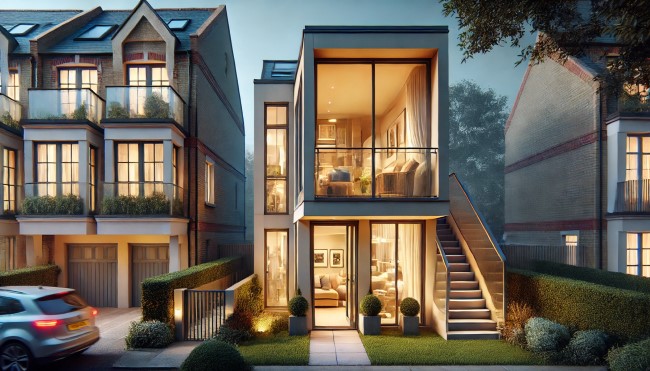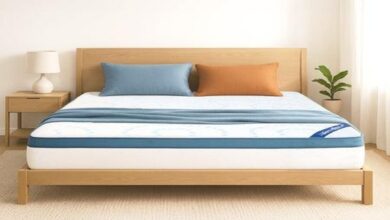What is a Maisonette? Your Comprehensive Guide to Understanding Maisonette Homes

In real estate, the term “maisonette” uniquely appeals to buyers and renters seeking a blend of apartment and house living. A maisonette, from the French word for “little house,” is a self-contained unit within a larger building, often spanning two floors. It typically has its private entrance, creating a house-like feel in a multi-dwelling property. Unlike traditional flats or apartments, a maisonette’s unique layout provides residents with enhanced privacy, making it a preferred choice for many urban dwellers.
Maisonettes are common in both modern and historic buildings. They offer the charm of a small house with the convenience of apartment living. These homes often appeal to those who want the best of both worlds—a standalone feel with the perks of a shared building.
What is a Maisonette in the UK?
In the United Kingdom, maisonettes are popular due to their practicality and affordability. They are often found in busy urban areas, constructed in spaces above shops, or even within renovated period properties. In the UK housing market, a maisonette is distinct from a flat because of its private entrance, often directly from the street, without shared hallways or elevators. UK maisonettes may come with outdoor spaces like small gardens or balconies, contributing to the appeal for city residents.
What Makes a Maisonette Different from a Flat?
- Private Entrance: Unlike flats, maisonettes usually come with their entrance from the outside, giving them more privacy. Flats, on the other hand, have shared hallways, elevators, or corridors.
- Two-story Layout: Maisonettes are typically two floors long, with a staircase connecting the levels. This design element distinguishes them from single-storey flats.
- Outdoor Space: Many maisonettes include private outdoor areas, such as small gardens or balconies, which are often missing from traditional flats.
These differences make maisonettes appealing to people who desire more autonomy within a shared building.
Critical Benefits of Living in a Maisonette
- Cost-Effectiveness: Maisonettes are generally more affordable than houses, yet they provide more space and privacy than traditional flats. They are an excellent option for first-time homebuyers or renters seeking the comfort of a home without the price tag of a whole house.
- House-Like Feel: Maisonettes’ two-story design gives a sense of separation between living and sleeping areas. This layout mimics the structure of a house, providing more privacy and functionality.
- Private Outdoor Spaces: Many maisonettes have private balconies or small gardens, a unique feature often missing in apartments.
- Flexible Living Spaces: Maisonettes often feature open-plan designs on the main floor, making them ideal for family living, entertaining, or adapting rooms to various needs, such as a home office or guest room.
Types of Maisonettes
- Garden Maisonette: This type of maisonette is often on the ground floor and includes a small private garden or patio.
- Upper Maisonette: Located on higher floors, upper Maisonettes usually have balconies rather than gardens. They may offer better views but need more direct ground access.
- Split-Level Maisonette: Spread over two or more floors, split-level maisonettes clearly distinguish the living and sleeping areas.
These maisonette variations allow home-seekers to choose a style that fits their lifestyle and preferences.
What is a Maisonette House?
A maisonette house is a section of a larger building that operates independently, like a small house within a complex. These homes can provide a similar living experience to a detached house but belong to a shared building structure. Maisonette houses are often located within more significant apartment buildings or converted townhouses, benefiting residents from both private and communal living.
What is a Maisonette Home?
A maisonette home is an appealing residential option, particularly in urban areas, as it combines the privacy and space of a house with the community feel of apartment living. Maisonette Homes caters to people who want independence but prefer staying connected to city life. With individual entrances and multi-level layouts, maisonette homes offer the privacy and comfort that single-level flats may need.
Comparing Maisonettes with Other Property Types
- Maisonette vs. Flat: The primary difference lies in layout and privacy. Flats are single-level with shared entrances, while maisonettes have their entrances and multiple levels.
- Maisonette vs. House: A maisonette shares a building with other units, whereas a house is a standalone property. Maisonettes can offer similar living experiences at a lower cost than full houses.
- Maisonette vs. Duplex: Although both types often span two floors, a duplex typically includes two separate living units side-by-side or stacked, whereas a maisonette is a single, self-contained home.
Potential Drawbacks of Living in a Maisonette
While maisonettes offer various benefits, there are a few considerations to keep in mind:
- Maintenance Responsibilities: Depending on the ownership type, you may be responsible for external maintenance or repairs. This aspect is crucial for freehold maisonettes, where owners take on more maintenance responsibilities.
- Noise: If a maisonette is within a converted period property, thin walls may lead to noise from neighboring units. However, newer builds are designed to reduce this concern.
- Limited Parking: Urban maisonettes often need more dedicated parking spaces, which can be challenging for homeowners with multiple vehicles.
Maisonette Ownership in the UK: Leasehold vs. Freehold
Maisonettes in the UK can be either leasehold or freehold:
- Leasehold Maisonettes: You own the property for 99 to 125 years. Leasehold owners may need to pay ground rent and maintenance fees.
- Freehold Maisonettes: Owning the freehold gives you complete property and land ownership. This setup eliminates ground rent obligations but often requires owners to handle maintenance and repairs independently.
Understanding the ownership type is essential, as it affects responsibilities, costs, and your ability to modify the property.
Conclusion
Maisonettes are versatile and attractive residential options for those seeking a balance between the privacy of a house and the community aspects of a shared building. In the UK, maisonettes are famous for city living, offering affordability, flexibility, and a unique house-like feel. Whether you’re a first-time homebuyer or a seasoned renter, a maisonette could be the ideal home if you desire independence with the convenience of urban proximity.
FAQs about Maisonettes
1. What is a Maisonette House?
A maisonette house is a self-contained, two-story unit within a larger building that provides a private entrance and often comes with outdoor space.
2. What is a Maisonette Home in the UK?
In the UK, a maisonette home is a multi-level dwelling with a private entrance that offers more privacy and space than a typical flat.
3. How is a Maisonette Different from a Flat?
Maisonettes have private entrances and multi-floor layouts, while single-level flats share communal access.
4. What Types of Maisonettes Are There?
Maisonettes can be garden, upper, or split-level types, each catering to different lifestyle needs.
5. What are the Benefits of Living in a Maisonette?
Maisonettes offer affordability, private entrances, outdoor space, and a layout resembling a small house within a larger building.
This comprehensive guide should help you understand what makes maisonettes unique and why they might be an ideal choice for city living.

